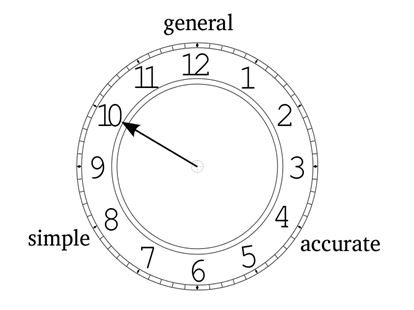Reviewed by
Ugo Merlone
University of Torino
 The book “Networks of Echoes: Imitation, Innovation and Invisible Leaders” offers a rather technical presentation of several models which are interesting to understand different complex networks phenomena. After illustrating perspectives on complexity, the book presents a decision making model which the other applications are built on. Among the most interesting applications we can find cooperation, influence and leadership.
The book “Networks of Echoes: Imitation, Innovation and Invisible Leaders” offers a rather technical presentation of several models which are interesting to understand different complex networks phenomena. After illustrating perspectives on complexity, the book presents a decision making model which the other applications are built on. Among the most interesting applications we can find cooperation, influence and leadership.In 1979 Karl Weick proposed the clock metaphor to illustrate Thorngate’s “postulate of commensurate complexity”, i.e., the impossibility of a theory of social behaviour to be simultaneously general, accurate, and simple. As it is well known this metaphor uses a clock with general at 12:00, accurate at 04:00, and simple at 08:00, and illustrates that a theoretical explanation satisfying any two characteristics is simply unable to satisfy the third characteristic at the same time. Therefore, we must be aware that any organizational theory inevitably has trade-offs in its content and development (Thorngate, 1976).
I would describe the research presented by West, Turalska and Grigolini as ten o'clock inquiry (see Figure 1), as the authors “adopt the strategy of making the fewest number of initial assumptions and relentlessly chase down what they imply” (p. 66) in order to obtain a general model which they use to investigate several properties of complex networks. Their approach clearly relies on the Occam's razor. They start from a minimal set of assumptions regarding the behaviour of groups and use them to construct a general mathematical model – the Decision Making Model – to simulate how groups reach a consensus. Then, by a master equation, they describe how the probability of being in a specific state changes over time. Starting from this building block they model and explore influence, committed minorities, and leadership.

|
| Figure 1. Merlone's clock. |
This approach may be criticized by some of those who use agent-based modelling. In fact, according to Batty et al. (2012): “ABMs break the basic rule of science that theory must be parsimonious – as simple as possible – and that a theory or model is better than any other if it performs equally well but is simpler; this is Occam’s razor. In fact, the argument for ABMs is quite the opposite” (p. 4). Nevertheless, it is interesting to see how different methodologies approach the same problems.
For a social scientist with little background in calculus the book can be demanding as it is rather rigorous. Nevertheless, an audience with a different background can still enjoy it, as most of the formal details are presented as appendix at the end of each chapter. In some parts the book could be friendlier to the reader: for example, all-to-all coupling is introduced on page 68 and thereafter referred to as ATA as acronym; then Section 3.2 (page 79) is devoted to explain it in more detail, yet the index section does not list these two pages under the entry ATA.
Furthermore, references are listed as it is common in journals of physics, i.e., titles of journal contributions are not reported; this does not help the reader orientating in the dense listing of references the volume provides.
The book is, nevertheless, quite interesting, although, in my opinion, the cognitive aspects are underrepresented to some degree. But this, in the end, is good news as it means that psychology and cognitive sciences are given a further opportunity to contribute substantially. Reading this book is a good starting point to (further) develop interdisciplinary bridge building.
BATTY M., A.T. Crooks, L. M. See and A. J. Heppenstall (2012). Perspectives on Agent-Based Models and Geographical Systems. In: Heppenstall A. J., Crooks A. T., See L. M. and M. Batty (eds.): Agent-Based Models of Geographical Systems. Dordrecht, Springer, pp. 1-15.
THORNGATE, W. (1976). “In general” vs. “it depends”: Some comments on the Gergen-Schlencker debate. In: Personality and Social Psychology Bulletin, 2, pp. 404-410.
WEICK, K. (1979). The Social Psychology of Organizing. New York, Longman Higher Education.